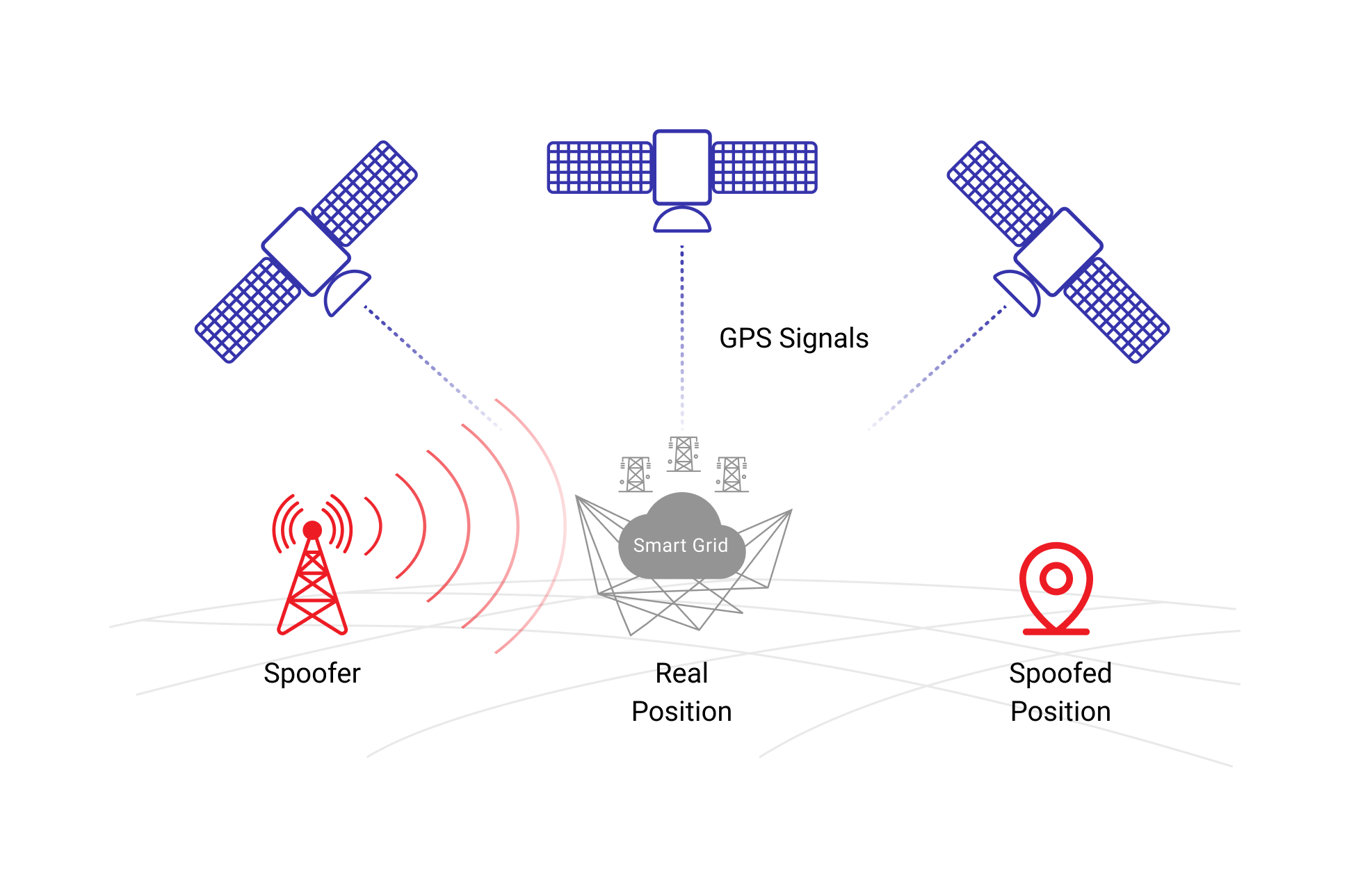Countries prioritize environmentally friendly practices and encourage organizations across industries to adopt sustainable technologies to respond to climate change. In particular, the energy and utilities sector has recognized that implementing smart grid management can help improve energy efficiency and meet the growing demand for renewable energy and distributed energy resources.
The 2020 Smart Grid System report released by the U.S. Department of Energy emphasizes the importance of managing cyber risks to successfully implement the smart grid. As smart grid operators increasingly depend on data from IoT edge devices such as sensors, AI equipment, and actuators to make real-time operating decisions, any attack on a single device can potentially provide unauthorized access to the entire organizational network and impact its stability.
Smart grid management system features several sensors deployed throughout the transmission and distribution grid to collect data, as well as real-time two-way communications channels that facilitate the transfer of this data between utilities and consumers. Additionally, the system has the necessary computing power to make that actionable and transactive.
Using digital communication, the network can respond to fluctuations in energy usage, which is becoming increasingly important as the number of households and energy usage continues to rise. As a result, there is a growing interest in monitoring data related to energy production, usage, and storage.
In order to build an efficient energy infrastructure, many companies are shifting from cloud computing-based technology to edge computing due to connectivity constraints. For instance, an electricity company employing hundreds or thousands of sensors to monitor supply and demand in real-time may find data transport cost-prohibitive and inefficient. Edge computing offers an effective solution by enabling the storage and communication between computing and resources. While smart grid systems offer numerous benefits, they also introduce new cybersecurity challenges.
This article examines the landscape of cybersecurity threats for smart grid management systems and to highlight how AI EdgeLabs can assist in mitigating cyber threats.
Industry shows concern in smart grid cybersecurity
The U.S. Department of Energy details that Cyber attacks on wide-area monitoring and control equipment, used to record precise environmental controls and timing data, can lead to disruptions in grid operations.
Recent AT&T Cybersecurity 2023 Edge Ecosystem report states that the energy and utilities sector has transitioned from using remote-control operations to intelligent grid management as their top priority for edge computing implementation, which is expected to be deployed in their production within the next three years. As more organizations leverage edge computing to enhance their operational efficiency, the potential risk exposure also rises, which could lead to severe financial repercussions.
AI EdgeLabs secures smart grid management systems
Many research papers [1,2,3] have highlighted the prevalence of several cyber threats within smart grid management systems. Among these, the most commonly reported are false data injection attacks (FDIA), denial of service, distributed denial of service (DDoS), and spoofing attacks. Unfortunately, these cyberattacks pose significant risks to the smooth operation of a smart grid, equipment damage, and the broader economy.
1. MITM-based false data injection (FDI) attacks
In this type of cyber attack, the hacker aims to manipulate sensor readings by exploiting communication network and channel vulnerabilities. This approach is considered less difficult than accessing the physical layer. Man-in-the-middle (MITM) attacks that exploit the vulnerabilities of IoT edge devices pose a significant threat. These devices often have limited computational power and are exposed to security risks to become targets for inserting false information into the system, leading to the misleading of the entire system. Certain wireless communication protocols are susceptible to exploitation, rendering them insecure and easily susceptible to breaches.
The MITM-based FDI attacks can have severe consequences, such as disrupting the smart grid management system’s ability to transfer data or make accurate decisions based on real-time data. AI EdgeLabs uses state-of-the-art machine learning models for intrusion and detection that identify false data injection attacks on the system in real time. By continuously monitoring network traffic and comparing it to established baselines, AI algorithms detect anomalies that may indicate a MITM attack, including false data injection. With this approach, suspicious payloads can be flagged, logged, or blocked to prevent the injection of false or malicious data.
2. Denial of Service (DoS) attacks
The energy industry is susceptible to DoS attacks and its advanced version, DDoS attacks. IoT edge devices in smart grid systems can be made inaccessible to the organization’s network through Denial of Service (DoS) attacks, which flood the network with large unexpected data traffic. The two primary methods of DoS attacks are service flooding and service crashing. Service flooding is accomplished using buffer overflow attacks, synchronization, and ICMP flood attacks. On the other hand, Distributed Denial of Service (DDoS) attacks, the most advanced DoS attack type, focuses on crashing the target device by attacking it from multiple compromised hosts instead of a single source.
AI EdgeLabs analyzes network traffic patterns and establishes baselines for normal behavior to address these attacks. With Cyber AI capability, it detects anomalies that indicate DoS or DDoS attacks by continuously monitoring incoming traffic. This enables early detection and prompt response. This automated response ensures rapid attack mitigation, minimizing the impact on network performance and availability.
3. Spoofing attacks
Spoofing attacks in a smart grid management system exploit communication links between monitoring devices and the control centers, which rely on real-time data for optimal performance. In such attacks, nearby attackers transmit high-power false signals with the same GPS frequency, spoofing GPS receivers. One significant challenge with GPS signals is that the position of each satellite in the global navigation satellite system is publicly available online, making GPS signal spoofing or jamming an easy task for malicious attackers.

Reliable data delivery within acceptable latency times is important to ensure early warning information about dynamic grid issues can be obtained. Therefore, it is essential that the GPS signals are resistant to interference, including jamming and spoofing, given the significance of the power system and the potential for the smart grid to depend on high-precision timing in the future.
AI EdgeLabs identifies patterns that indicate spoofing attacks by analyzing network packets, telemetry data, syscalls and IO events on operating system, etc. When a spoofing attack is detected in the smart grid management system, the threat intelligence system generates alerts, triggers automated responses, or notifies security personnel for immediate action.
Conclusion
Given that smart grid management systems heavily rely on digital communication and real-time data to make informed decisions, ensuring robust AI-powered cybersecurity approaches is essential. The approach to edge security for smart grids must consider the need to maintain data confidentiality, availability, and integrity. However, it is important to note that traditional cybersecurity solutions used in IT networks cannot be sufficient for securing smart grid networks due to their inability to operate at the native edge and secure the infrastructure even when the endpoint devices are not connected to the internet.
It is important to adopt a cybersecurity solution that is customized to meet the specific needs of smart grid management in the energy and utilities industry. AI EdgeLabs addresses the prominent attacks against the smart grid systems providing real-time threat detection and autonomous response capabilities. Moreover, they incorporate advanced technologies like artificial intelligence and machine learning to identify anomalous behavior and prevent cyber attacks before they occur, making AI EdgeLabs the only go-to edge security solution in the market.
References
[1] J. Ding, A. Qammar, Z. Zhang, A. Karim, and H. Ning, “Cyber Threats to Smart Grids: Review, Taxonomy, Potential Solutions, and Future Directions,” Energies, vol. 15, no. 18, p. 6799, Sep. 2022, doi: 10.3390/en15186799.
[2] Z. Elmrabet, H. Elghazi, N. Kaabouch, H. Elghazi. “Cyber-security in smart grid: Survey and challenges,” Cyber-security in smart grid: Survey and challenges - ScienceDirect, May 07, 2018. https://www.sciencedirect.com/science/article/abs/pii/S0045790617313423#preview-section-cited-by.
[3] Y. Yan, Y. Qian, H. Sharif and D. Tipper, "A Survey on Cyber Security for Smart Grid Communications," in IEEE Communications Surveys & Tutorials, vol. 14, no. 4, pp. 998-1010, Fourth Quarter 2012, doi: 10.1109/SURV.2012.010912.00035.



